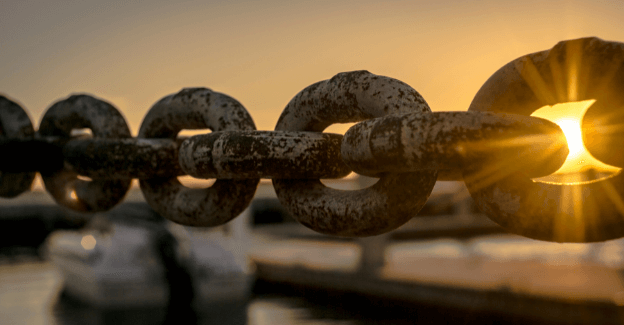4 Tips to Improve Supply Chain Resilience
The year that started the global pandemic also brought more than just the coronavirus. The world became acutely aware of the weak links within the global supply chain. At the onset, product and people movements were challenging. We saw supply shortages not entirely driven by hoarding behavior, but because the supply chain was stuck.
The question became this: How do we get people and products moving safely, without jeopardizing employees’ health, safety and well-being, as well as customers?
With many suppliers unable to operate, organizations of all sizes scrambled to find alternate sources of supply across direct and indirect categories. Procurement, supply chain and business leaders were all scrambling to find PPE equipment when most of us didn't even know where to start.
Despite the ingenuity of procurement and supply chain leaders who were accustomed to finding cheaper sources of supply, they soon had to look closer to home to make effective purchasing decisions. They watched the bottom line of the company, while witnessing the top-line come to an abrupt halt for most industries.
2020 also brought additional considerations around safety and sustainability, and the social aspects of our operations. Organizations were left with no choice but to self-reflect, acknowledge, engage in a well-meaning dialogue, and demonstrate accountability through metrics and measurements. Among all of this, it feels like we’ve had no time to think, let alone act, when the expectation is to deliver results fast (largely due to the lack of action that has gone on far too long for acceptability).
While we may not be able to prevent this from happening again, we can be better prepared. Central to this is paying more attention to the key themes identified in 2020 and creating a responsiveness plan on how to address them.
1. Localize the Supply Chain
With the challenges brought by the pandemic, the Suez Canal blockage and a polarized global political climate, we need to consider having some level of localized supply chain capabilities for critical goods and services. While we were saved from the empty toilet paper shelves this time, it may not be the case next time. Also, fundamentally, we may want to reset what we deem critical as individuals, families, communities and organizations to focus on localization.
Having access to local or near-shore suppliers is one way for organizations to improve access to goods. However, the thought shouldn't be limited to finished goods and products but rather the material needed to create those final goods. During the pandemic, all countries discovered and learned a hard lesson of how dependent we are on the global supply chain. While this is something we already knew, no one quite understood the impact of what it meant until it happened.
There were some hard truths to confront about how patents work, the lack of raw materials and equipment needed to create lifesaving products, and how these can be controlled in such a way that cripples entire nations and organizations.
2. Invest in Supplier Risk Management
Supplier risk has become a regular part of our business vocabulary beyond the procurement team. After the past year, there is a lot more awareness of it. Investments in monitoring and governing supplier risk have become a topic of discussion at the board and C-suite levels that were never given consideration in the past.
However, the lack of investment means that businesses have a lot of catching up to do in order to measure and monitor supplier risks of various types in a cost-effective manner.
Many organizations weren't even aware of their reliance on second-, third- and or fourth-tier suppliers until the pandemic. Organizations need to review their existing supplier risk programs to identify the depth of their supply chains and monitor risks associated with each tier of the supplier.
3. Move Toward Cybersecurity Resilience
While cybersecurity is deemed one type of critical supplier risk, it requires special attention and unique consideration since technology continues to be heavily integrated with our daily lives at home, work, school and even our surroundings.
The bad actors are finding ways to access any environment to manipulate and harm individuals and organizations. Investment in cybersecurity tools and skilled professionals shouldn't be seen as a mere P&L cost center but rather as critical to an organization’s survival to protect its financials, assets and reputation.
Cybersecurity as a practice is relatively deep and wide. While technological advances continue to improve monitoring by leaps and bounds, it is still reasonably reactive. Look for AI-driven tools that provide predictive capabilities to help get ahead of cyber threats that may be looming in your environment. While this space is continuing to evolve, and we will see more sophisticated tools that provide better predictions with accuracy and precision that humans cannot match come to market, it will require practitioners partnering with cybersecurity providers in the future.
4. Capacity Planning Focus Due to Persistent Cargo Constraints
Who knew and anticipated that cargo movements would bring the constraints we saw in the past year? Movement of goods that we took for granted or perhaps forgotten about reminded all of us about the fragility of our supply chain when cargo is restricted either due to inability to access the cargo, move the cargo or even house the cargo in a cost-effective manner. With a sharp reminder of how critical cargo routes are for the effective movement of goods, we likely need to reimagine how we can reduce cargo constraints by air, sea or roads. Much attention is paid to cargo movements using trucks on the road, but what about other cargo routes?
Multi-modal route planning is needed to connect cargo to the supply chain through different routes that don’t include single points of failure. For example, major trade routes that connect Asia, Europe and North America were driven by cost considerations, but now they need to be planned based on the route's availability. We should reconsider how we think about backup routes. What if none exist or they are not cost-effective?
Procurement, sourcing and supply chain leaders must work with business leaders to revisit and reimagine how we can do things differently and plan business continuity with minimal impact. Many organizations are exploring local supply chain availability and building up near-shore capabilities that can be more cost-effective in such scenarios.
While the events over the past year have taught us a lot about the need to be resilient in many ways, however how we solve it will be dependent on leaders’ ability to think outside of the box, embrace a diversity of thoughts from those on the front line and adding domain expertise to improve supply chain resiliency.








